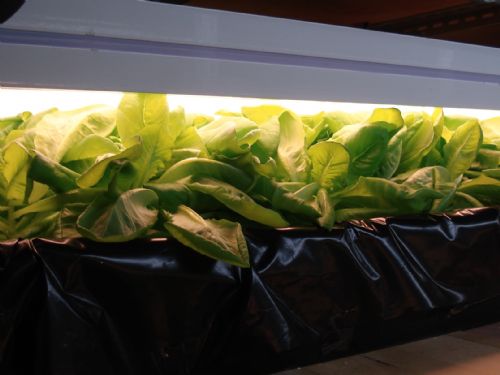
LEDinside reported that LED lights were used in the field of plant lighting, which is undoubtedly a considerable positive news for plant factories.
First of all, here is a brief introduction to the plant factory.
Plant factory, through the high-precision environmental control within the facility to achieve an efficient agricultural system for annual production of crops, is the use of computers to automatically control plant growth temperature, humidity, light, CO2 concentration and nutrient solution and other environmental conditions, so that plants within the facility Labor-saving production that is not subject to, or rarely constrained by, natural conditions.
After the birth of the plant factory concept, plant lighting came into being. What is plant lighting? Plant lighting mainly plays a complementary role to sunlight and regulates the role of agricultural products.
Due to the fact that the energy consumption of traditional plant lighting is quite large, LED plant lighting has also been widely used in various plant factories with the application of this LED lighting technology in various fields.
A few days ago, the reporter learned from Shenzhen Federal Electronic Technology Co., Ltd. that LED plant lighting currently has a huge market prospect.
According to the Shenzhen Federation’s Bureau of Science and Technology, the major demand for LED plant lighting includes the continental regions vulnerable to climate change, the shortage of agricultural plants in certain seasons, including China and the United States, and the low density of man-made organic land, or Demand has also gradually increased in regions with relatively short sunshine, including Japan and Northern Europe. In addition, energy-saving LED lighting applications have become a trend in agricultural equipment. At present, 90% of LED plant lighting products in mainland China are exported for export.
Plant plants have not been used in China for a long time. LED plant lighting has entered the market strongly when traditional plant lightings have not yet established a foothold in the market. China is a big country in the world and a big country in the LED industry in the world. LEDinside believes that the market capacity of LED plant lighting in China will increase significantly in the next three years:
First of all, with the explosive growth of plant factories, the market for LED plant lighting will also be greatly expanded. The main reasons for the increase in the number of plant factories are as follows:
1. China's urban population has increased dramatically, the number of farmers has been decreasing, and plant factories have substantially increased their production capacity. Under such circumstances, plant factories will explode.
Second, people's quality of life continues to increase, the demand for off-season vegetables and fruits continues to increase, and plant factories can produce all kinds of fruits and vegetables all year round;
Third, the greenhouse effect causes natural disasters to occur frequently. Plant factories can largely reduce the losses caused by natural disasters.
Secondly, China is a big country for LED production and sales. It has an excellent advantage in the LED lighting industry (technique, price), prompting LED plant lighting to become a dominant player when traditional plant lighting is not yet mature.
It is understood that the two types of monochromatic light currently used are: red light (630-660 nm) and blue light (460-470 nm). The Shenzhen Federal Bureau of Science and Technology revealed to reporters at our station that the main technical problem is that each plant's requirements for light are different. Many companies do not have the ability to respond to the wavelength of light by adjusting plants. Many LED plant lighting companies do not know the wavelength of light that a particular plant needs.
LEDinside suggested that: LED plant lighting manufacturers plant factories and plant research institutes closely cooperate, according to the characteristics of plants arranged matching light source, promote the photosynthesis of plants. In addition, try to produce a large range of light sources, or a variety of light sources, intelligent control, to meet the simultaneous needs of a variety of plants.

 LEDinside reported that LED lights were used in the field of plant lighting, which is undoubtedly a considerable positive news for plant factories.
LEDinside reported that LED lights were used in the field of plant lighting, which is undoubtedly a considerable positive news for plant factories. 
